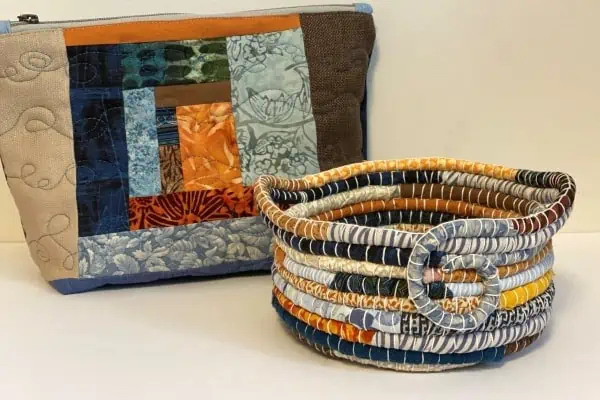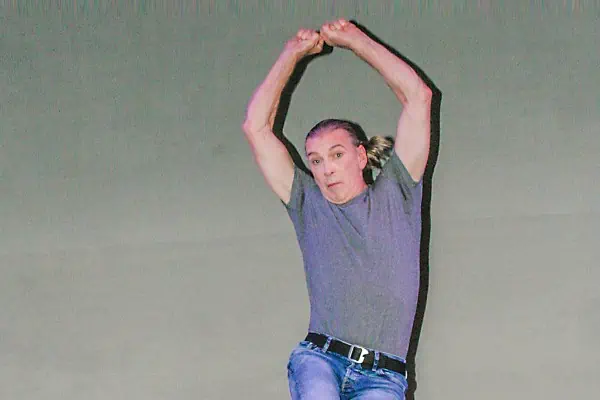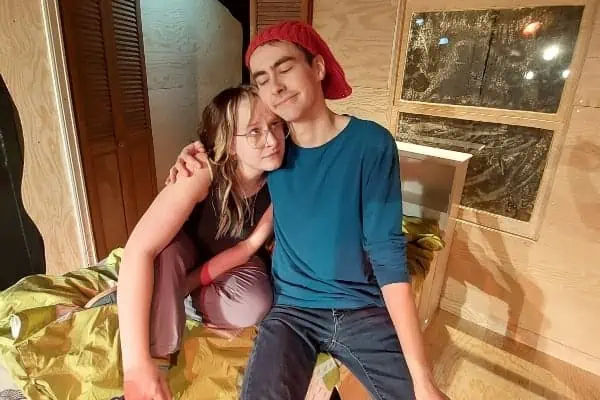There are currently two mammoths at the Yukon Arts Centre. But they don’t interact; they are on different schedules.
The one hanging out in the Public Art Gallery belongs to the Ice Age Mammals exhibit. The other mammoth — the one of current interest — is symbolic. He lives in the Community Gallery as part of the installation, Face Us.
Face Us is the first product of the union between local artist Marie-Hélène Comeau and Toronto’s Dr. Love. Their collective is called Touraf — “Far Out” when read backwards.
“ This project is a prayer to all of us who are only passing,” says Comeau.
Face Us is the fusion of two artistic projects around the theme of mobility and passage.
It all began in Dawson City through the winters of 2010 and 2012. Dr. Love created his own artist residency, at the Pit of all places.
During this residency, he drew over 200 Dawson residents. These portraits reflect snap-shots of the participants within that specific time frame. In the summer of 2014, Dr. Love returned to Dawson City with the portrait drawings transformed as prayer flags and displayed them as an art installation over the city. By that point, several people depicted had left or passed away.
Last summer, Comeau took part in the first edition of Nuit Blanche in Whitehorse. Her interactive art performance was a 12 hours tribute to the mobility of the territory’s population. Through the duration of the night the artist, along with visitors, created origami paper boats containing the names of Yukoners who had moved on and left traces of their memories with the people who remained.
“The paper boats eventually covered the entire floor of the community room of the Centre de la Francophonie,” explains Comeau.
These two projects fused into Face Us.
The two artists created a big papier mâché mammoth and printed the portraits of the Dawson residents on it.
“The mammoth has been gone for a very long time, yet we still talk about him. He’s part of our collective imagination,” says Comeau of the pre-historic beast.
The collective Touraf now uses the symbol of a mammoth to illustrate how many people in our lives have left but still exist in our memories. Displayed around their created mammoth are the paper boats in which the names of departed Yukoners are nested.
“In 20 years in the Yukon, I’ve seen a lot of people come and go, but everyone left a trace,” states Comeau.
“To combine these two projects into an installation is our creative way to address a very Yukon reality.”
Comeau’s background is in anthropology, and Dr. Love is a social worker.
“We are naturally drawn to people,” says Comeau. She explains that this interest in people pushes them to experiment with making art a human experience, and not just something to consume. The collective also stays away from technology.
“Maybe it’s just because we’re really bad at it,” Comeau laughs.
“You can take as many pictures as you want of someone with your thingy [smart phone], but when someone takes the time to draw you, you connect on a whole other level.”
For Face Us, all they used was a pen and paper.
Comeau claims, “It’s reassuring to know you can still move people with traditional mediums.”
Face Us is on display at the Community Gallery of the Yukon Arts Centre until November 30.




